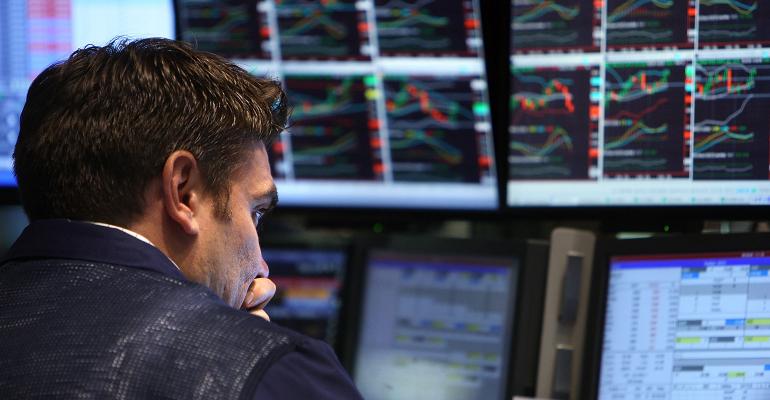By Lu Wang
(Bloomberg) --For years, it’s been the same refrain. Don’t bail on active management, you’ll regret it when the market turns sour.
And while the selloff that ripped through equities this month has been too short to prove anything, early returns suggest they had a point. Thanks to differentiated bets on stocks, equity mutual funds beat benchmarks across the board from Jan. 29 to Feb. 6, with those in the large-cap growth style doing best, data compiled by UBS AG show.

Is it vindication? Not even close. Passive proponents still have years of data showing their strategies beat their active rivals by a ratio of roughly 4-to-1. But it’s at least a cause for hope among stock-selecting managers, a group whose very existence has come under threat as trillions of dollars were shifted into passive funds.
“It proves the merit of having an allocation to active strategy,” Keith Parker, head of U.S. equity strategy at UBS, said by phone. “When valuation dispersion is low and potential growth differences are high, that favors an environment where active managers can make more of an impact.”
Mutual fund managers who rely on stock-picking skill could almost be forgiven if they were hoping for a correction in equities. Years of steady gains have handed anyone who bought an exchange-traded fund tracking the S&P 500 an annualized gain of almost 20 percent since 2009. Total assets controlled by passive investors like exchange-traded funds have grown to $6.6 trillion, squeezing the share in active.
The steadiness of that appreciation, which some even link to the risk-mitigating influence of things such as ETFs, could set the stage of an active-manager renaissance. Or at least that’s what they hope.
Everyone knows equities are expensive, but the degree to which price inflation pervades every corner of the market right now is uncommon. According to a study by Leuthold Group that sorted the market by the size of companies, every segment is trading above historic multiples. So widespread is over-valuation that it exceeds anything from the dot-com era.

Key to muting losses for active funds in the past few weeks are better returns on their favorite bets. A Goldman Sachs basket of mutual funds’ most-loved shares beat the S&P 500 by 0.4 percentage point since the rout began on Jan. 26. Smaller losses in popular names are one reason why clients managed not to panic during the equity correction, which was the worst in two years, according to David Kostin, chief U.S. equity strategist at Goldman Sachs.
“Despite the market decline, investors have expressed agreement with our view that fundamentals remain healthy,” Kostin wrote in a Feb. 9 note. “Rather than potential downside, most conversations have focused on what to buy in anticipation of the eventual recovery.”
Another group that fared relatively well in the tempest has been hedge funds, whose returns just exceeded the market after trailing it most of the time during the nine-year rally. The Hedge Fund Research Equity Hedge Index, tracking those specialized in stocks, lost 3.6 percent during the two weeks through Feb. 8, roughly a third of the S&P 500’s decline over the stretch.
And it’s not just their bearish wagers that were working. So were their long bets. The Goldman Sachs Hedge Industry VIP ETF, tracking the most widely held stocks by hedge funds, also outperformed the market amid the selloff.

Unlike ETF investors who were rushing to exit stocks during the selloff, active managers may have taken advantage of falling prices to add to their favorite positions. As a result, stocks with the highest active ownership beat those with the highest passive ownership by 150 basis points, UBS data showed.
“Certain stocks are defended,” Parker said. “If you think of what active managers are going to buy through the selloff, they’re probably going to buy what they already like that are 5 to 10 percent down.”
--With assistance from Charles Stein.To contact the reporter on this story: Lu Wang in New York at [email protected] To contact the editors responsible for this story: Arie Shapira at [email protected] Chris Nagi, Richard Richtmyer





